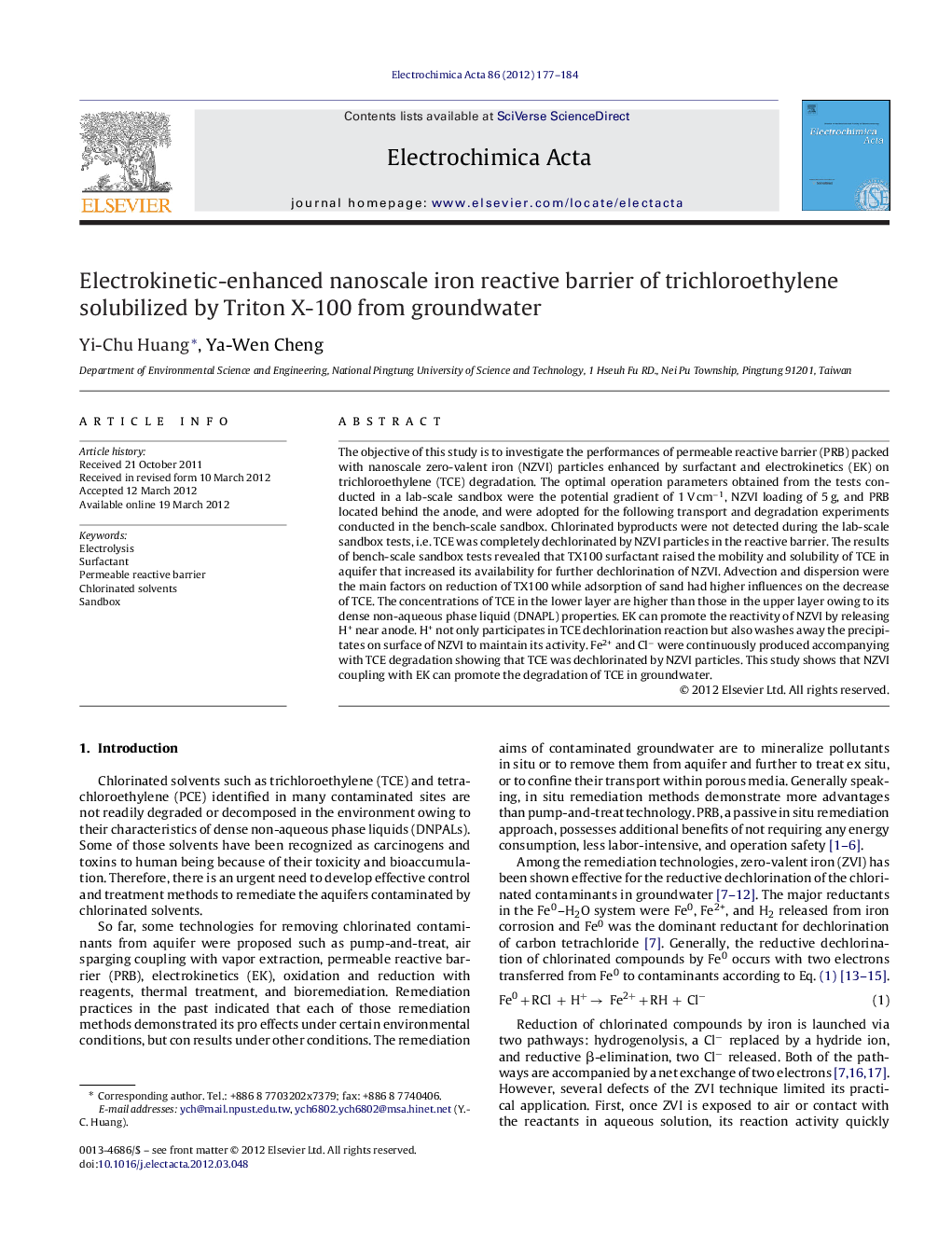| Article ID | Journal | Published Year | Pages | File Type |
|---|---|---|---|---|
| 187534 | Electrochimica Acta | 2012 | 8 Pages |
The objective of this study is to investigate the performances of permeable reactive barrier (PRB) packed with nanoscale zero-valent iron (NZVI) particles enhanced by surfactant and electrokinetics (EK) on trichloroethylene (TCE) degradation. The optimal operation parameters obtained from the tests conducted in a lab-scale sandbox were the potential gradient of 1 V cm−1, NZVI loading of 5 g, and PRB located behind the anode, and were adopted for the following transport and degradation experiments conducted in the bench-scale sandbox. Chlorinated byproducts were not detected during the lab-scale sandbox tests, i.e. TCE was completely dechlorinated by NZVI particles in the reactive barrier. The results of bench-scale sandbox tests revealed that TX100 surfactant raised the mobility and solubility of TCE in aquifer that increased its availability for further dechlorination of NZVI. Advection and dispersion were the main factors on reduction of TX100 while adsorption of sand had higher influences on the decrease of TCE. The concentrations of TCE in the lower layer are higher than those in the upper layer owing to its dense non-aqueous phase liquid (DNAPL) properties. EK can promote the reactivity of NZVI by releasing H+ near anode. H+ not only participates in TCE dechlorination reaction but also washes away the precipitates on surface of NZVI to maintain its activity. Fe2+ and Cl− were continuously produced accompanying with TCE degradation showing that TCE was dechlorinated by NZVI particles. This study shows that NZVI coupling with EK can promote the degradation of TCE in groundwater.
